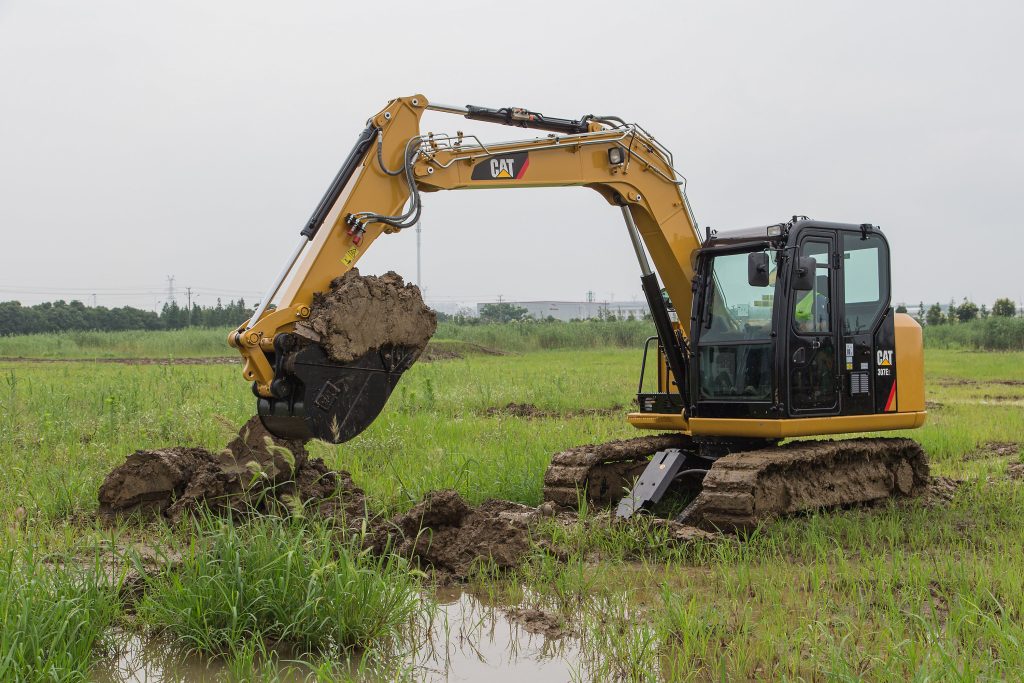Caterpillar’s Cat 307 excavator has a 354 HP engine that gets 17.3 miles per gallon when it runs on diesel fuel. When running on natural gas, it gets 11.4 miles per gallon. Some reported problems with the Cat 307 excavator engine include faulty exhaust headers and broken inlet valves.
Cat 307 Excavator Engine Low oil pressure
I have a Caterpillar 307 excavator that is getting low oil pressure. When I first start the machine in the morning oil pressure is fine. After about five minutes of running I get a flashing light and an alarm that indicates low oil pressure. After shutting down the machine and restarting it, the oil pressure returns to normal.
At this point I have replaced the oil pump, changed the oil and filter, replaced the primary and secondary filters, checked all fittings (no loose or leaking fittings) and re-seated/tightened any hoses that may have been loose or leaking.
I am not an engine expert, but I believe its got to be something with either air in the system or excess fuel diluting my oil. I have noticed that when changing my primary filter there is diesel fuel in my oil supply line from my tank to my pump.

Cat 307 Excavator Engine Bad head gasket
I have a 2006 cat 307 excavator that has been overheating. I have replaced the radiator, thermostats and water pump. I am still having temperature issues. I took the head off and found that all 6 head gaskets are blown out. This machine is not last long since this happened. The fluid level in the radiator is low and I can see that the fluid is going into the engine not out of it.
I have a 2006 cat 307 excavator that has been overheating. I have replaced the radiator, thermostats and water pump. I am still having temperature issues. I took the head off and found that all 6 head gaskets are blown out. This machine is not last long since this happened. The fluid level in the radiator is low and I can see that the fluid is going into the engine not out of it.
Cat 307 Excavator Engine Broken timing belt
A timing belt is a belt that runs along the crankshaft and drives several of the engine’s accessory belts, such as the water pump belt. The timing belt’s primary purpose is to keep all the accessory belts in sync with each other and with the engine’s crankshaft.
These belts wear out over time and need to be replaced periodically. When they’re worn out, they usually show up as a whining noise that gets louder as time goes on.
The first sign of a timing belt breakdown may be an increase in engine noise, which might lead you to believe that something is wrong with the engine itself. However, this can be an indication of a more serious problem, such as bent or broken accessory belts.
Fortunately, it is possible to detect if a timing belt has failed by checking for nicks or cracks in the belt. If you find any of these signs, change your timing belt now before it breaks completely and does more damage to your engine.
Cat 307 Excavator Engine Bad perforated liner
I had an issue with getting the timing marks to line up. I spoke to a CAT engine guy and he recommended removing the cam gear and putting it in the right place. This being my first time doing this job, I didn’t want to try that myself. It’s relatively easy to remove it, but you will need a new seal when you put it back on.
I was able to turn the engine over by hand (with the starter motor) with a big ratchet or breaker bar. There are a couple of threads here about how best to do this (removing the feed pump and setting crank to top dead center).
Once I had the crank in top dead center, I was able to get it lined up with one of the timing marks by turning the injector pump like crazy with an allen wrench. After that, everything lined up as it should have.
Cat 307 Excavator Engine Worn out piston/liner
I have a Cat 307 Excavator that is getting oil to the cooling system from the engine. I took off the head and found one of the pistons/liners had worn through on both sides. The liner was turned down before, so I’m thinking it was done before I bought it. The machine has 4029 hrs.
on it and it’s only been used to dig footers and foundation for houses so it hasn’t been worked hard at all, just normal use. I noticed last winter when running it in the shop that it would blow white smoke when first started and then clear up. I think now that this is why, the coolant is entering the combustion chamber and turning to steam giving me my white smoke.
Is there anything that can be done to prevent this? Would a different brand of piston/liner help?
I talked with a guy at Cat about this and he said there was nothing wrong with the liners that they know of but did say that IF there was something wrong with them, Cat’s replacement liners would be better than what you could buy from your local parts supply house.
